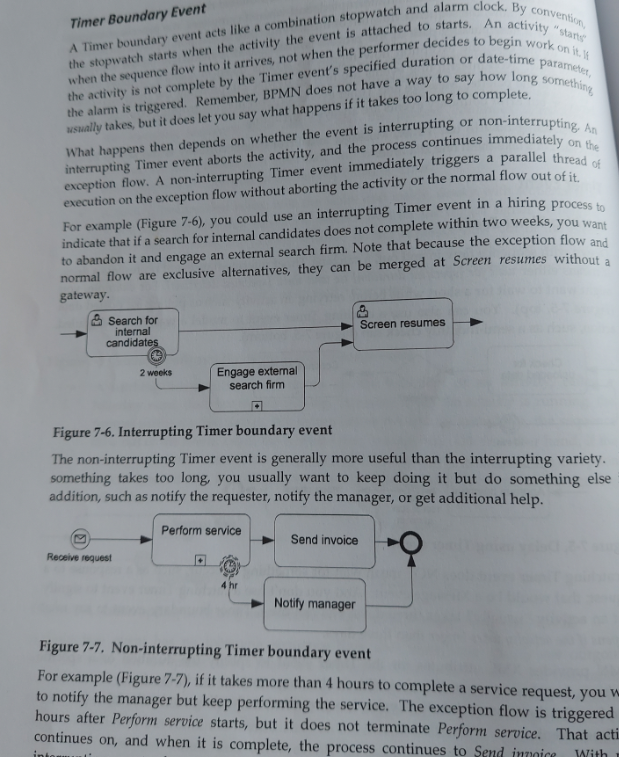Hello!
We're having a discussion here about the 'exact how to' concerning the following case.
Please know that we're using Bruce Silver's book as a reference, but even with that source, we're still inconclusive, perhaps you guys can help!
We have two options of modeling a certain reminder process, here's option 1:
Option 2:
Bruce Silver's book offers (among others) this example.
Personally I am leaning towards option 1, but does that task still adhere to the OTOPOP principle?
In essence, the 'Send reminder 1 to start' task is now checking an incoming answer AND sent message. This is more than one 'task'.
Also because the second option is very elaborate and will make some processes very long.
Hope you guys can help us with this, our team is split between options 1 and 2.
Thanks in advance,
BR,
Vincent









M. Zschuckelt on
Maybe I am naive, but could it be as simple as this?
Explanation: A receive message task waits until the expected message is received. So the non-interrupting timer events at 7 and 14 days do not interrupt waiting for the message. The interrupting timer event at 21 days does and finishes your process with "Analysis cancelled". If ever the message is received within 21 days the process will continue to "Start up analysis" and no further timer events on "Receive start message" will occur. Also note that an end event only ends the process branch it occurs on, consuming the token arriving at it. Other tokens will continue.
EDIT: Updated process image with Customer pool.